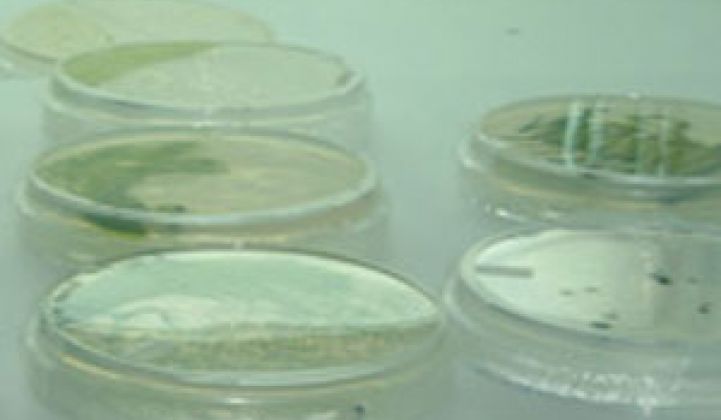It isn't easy to make sugars out of grasses, woodchips and other biomass effectively and cheaply.
And that challenge presents a new opportunity for investors and entrepreneurs in the biofuel field, industry experts said at a conference in Redwood City, Calif., on Wednesday.
A biofuel panel at the Dow Jones Alternative Energy Innovations conference said the difficulties of coaxing sugar out of cellulosic materials and the need to reduce the sugar production costs fall under venture capitalists' definition of "pain points" that also spell money-making opportunities.
"I haven't seen any pure-play cellulosic sugar companies," said panelist Doug Cameron, managing director and chief science advisor at investment firm Piper Jaffray. "I think it will be worth exploring."
Government policies to promote alternative transportation fuels have prompted a raft of companies looking to commercialize methods for making fuels out of plant' cell walls, or cellulose. Those companies are not just making ethanol, but also biobutanol, biodiesel, jet fuel (kerosene) and other types of fuels (see Cobalt To Build a Pilot Plant in 2009).
These companies are using switchgrass, sweet sorghum, wood chips and other nonfood sources to make the fuels, which could help overcome objections about using corn and other food crops for fuel.
Some critics have contended that making fuels from food crops has raised food prices significantly worldwide, prompting some politicians to retool policies that didn't address this concern (see EU Supports 10% Biofuel Target, Limits Food-Based Biofuels).
Because the biofuel industry is so new, cellulosic biofuel companies currently have to worry about securing their feedstocks from farmers – or doing their own planting – as well as developing the technologies to convert feedstocks into sugar and then fuels.
Breaking down the cellulosic materials into sugar cost-effectively poses a significant challenge for companies.
Take algal-oil company Solazyme, which converts cellulose – including switchgrass and woodchips – into sugar to feed the algae for making biofuels for the transportation, cosmetic and food markets (see Solazyme Explores Jet-Fuel Market).
"We are still confused, to be perfectly honest with you, about which feedstocks will have the logistical criteria that will make those bets good bets," said Solazyme CEO Jonathan Wolfson, who also sat on the panel.
Instead of investing in both sugar conversion and fuel-making technologies, a new breed of companies could focus on developing and selling sugar - not the kind used to sweeten our coffee and make cookies – specifically targeted to biofuel companies, Cameron said.
"Maybe it can become a commodity" that could be traded, Cameron said in an interview after the panel discussion. "Many people would want to buy it if it's a good price. Many industrial processing companies also would like to use this kind of sugar."
Getting sugar out of plants isn't new science. But doing it in large volumes and cheaply is a big hurdle. The U.S. Department of Energy has set a goal of developing technologies that can make cellulosic sugar as cheap as 6 cents to 8 cents per pound within five years, said Rajat Sapra, director of enzyme optimization at the Joint BioEnergy Institute overseen by the DOE.
Cheap sugar is necessary to produce biofuels that are cost-competitive with fossil fuels.
The cellulosic biofuel industry is far from reaching the low-cost goal, said Sapra, who also participated in the biofuel panel. Corn-based sugar used to make ethanol now costs about 22 cents per pound, even at a subsidized price, Sapra said.
Companies would have to overcome several technical challenges to be able to make low-cost cellulosic sugar. Right now, the biofuel industry relies largely on the method used by the paper-and-pulp industry for treating the cellulosic materials, a process that includes too many steps, Sapra said.
Streamlining the treatment process will be key to shortening the time and lowering the cost of making biofuels, he added.



